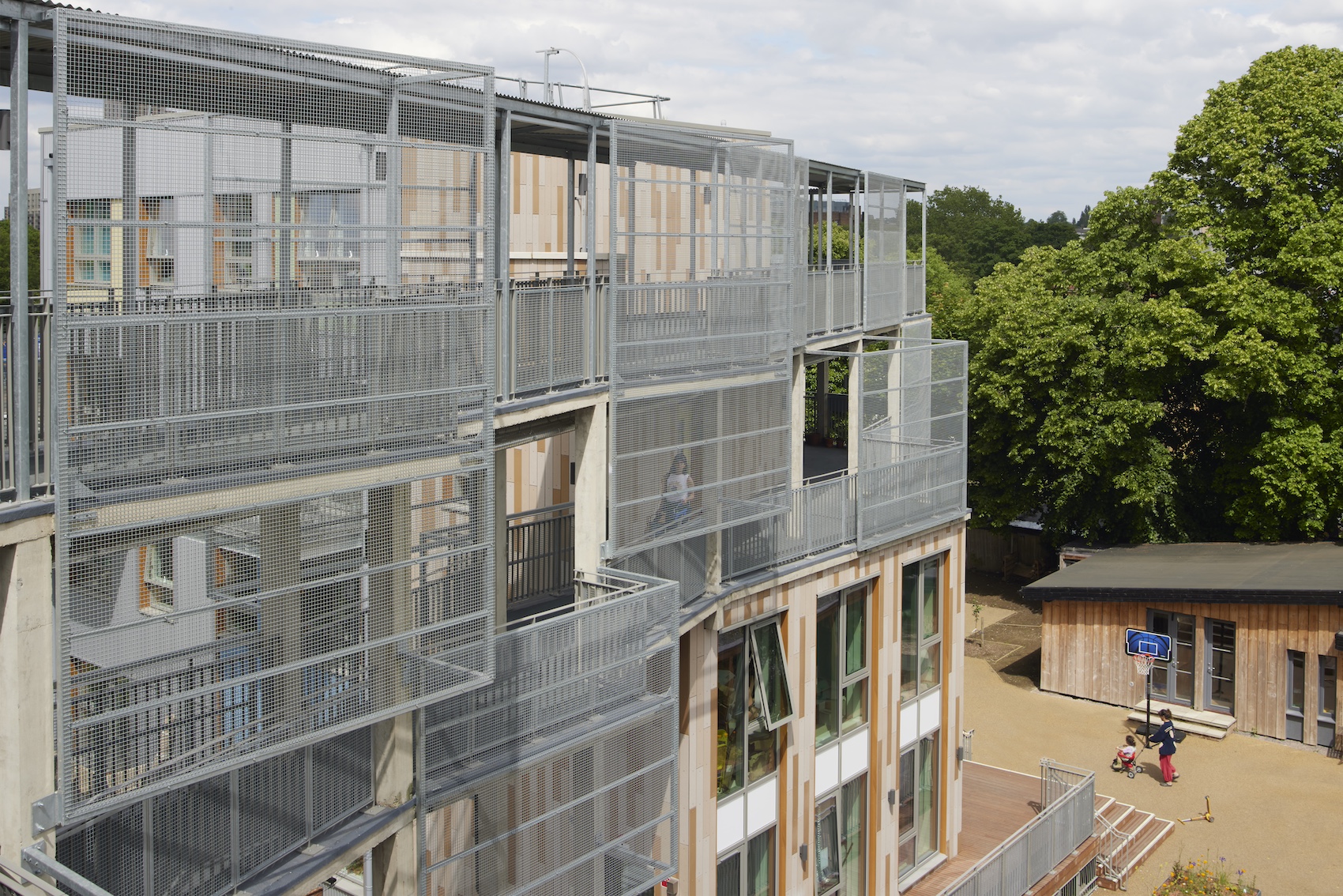Shepheard Epstein Hunter, with Architype and Jon Broome Associates, has completed 36 homes for the Rural Urban Synthesis Society, a community land trust in Lewisham.
Photos
RUSS
Launched in response to the dire lack of genuinely affordable housing in the area, the Rural Urban Synthesis Society (RUSS) has built 36 homes in Ladywell, Lewisham in Southeast London.
The project has been 15 years in the making, with local volunteers taking a lead on every stage of the development process, including acquiring land, raising funds, supervising architects and contractors, gaining planning permission, and building and landscaping the project.
RUSS’s homes take the shape of two four-storey blocks that reside on a vacant plot of land found at the rear of a cul-de-sac of Victorian terraces. Looking over the Ravensbourne river, the blocks are staggered across the site, being raised on concrete columns in order to be suitably above the flood level.
The blocks are linked by elevated walkways that span the façades on the southern side of the blocks, creating in turn communal decking that looks over a shared courtyard and playground. Metal shading on this side gives protection to south-facing windows and adds to the hands-on semi-industrial architectural sense of the place, while multi-coloured cladding and generous greenery ensures the projects tectonic approach isn’t visually overbearing.
Originally the project was to be built using timber, including a structural timber frame and timber cladding, as per the designs of Architype who had brought forward plans as part of a co-design process with RUSS. However, with Brexit, Covid and Grenfell impacting the price and perception of timber, that scheme had to be amended. Shepheard Epstein Hunter subsequently came on board and in its revised scheme, was able to increase the number of dwellings from 33 to 36.
Fibre cement board has replaced timber cladding while triple-glazed windows mean the building thermally performs to a high level.
Of the 36 homes delivered, all are locked into a resale price agreement that means all are tied to the original cost of the building in perpetuity (as opposed to fluctuating in line with the property market). Homes come in various sizes and tenures: full ownership, part rent-part- buy, London Living Rent, and social rent, with prices ranging from £290,000 for a one-bed flat to £590,000 for a four-bed.
Residents comprise a mix of single people, young families and more senior citizens – of which all were selected through a ballot. The resident community determine how their housing is managed with regular meetings in an on-site community hub built by volunteers.
“This has been a momentous and challenging project, but this community-led organisation has succeeded in creating a sustainable neighbourhood and unique housing model,” said the chair of RUSS, Anurag Verma, in a statement.
This shows what can be achieved when ordinary people work together with a shared vision and determination. The project has been led by the community from the outset through the design, planning and building processes. The result is 36 homes with four tenure types, fully tailored to the needs of the residents. We hope that other community groups will be inspired to learn from this model and create their own housing to meet their needs.”
Additional images
Source: Architecture Today








